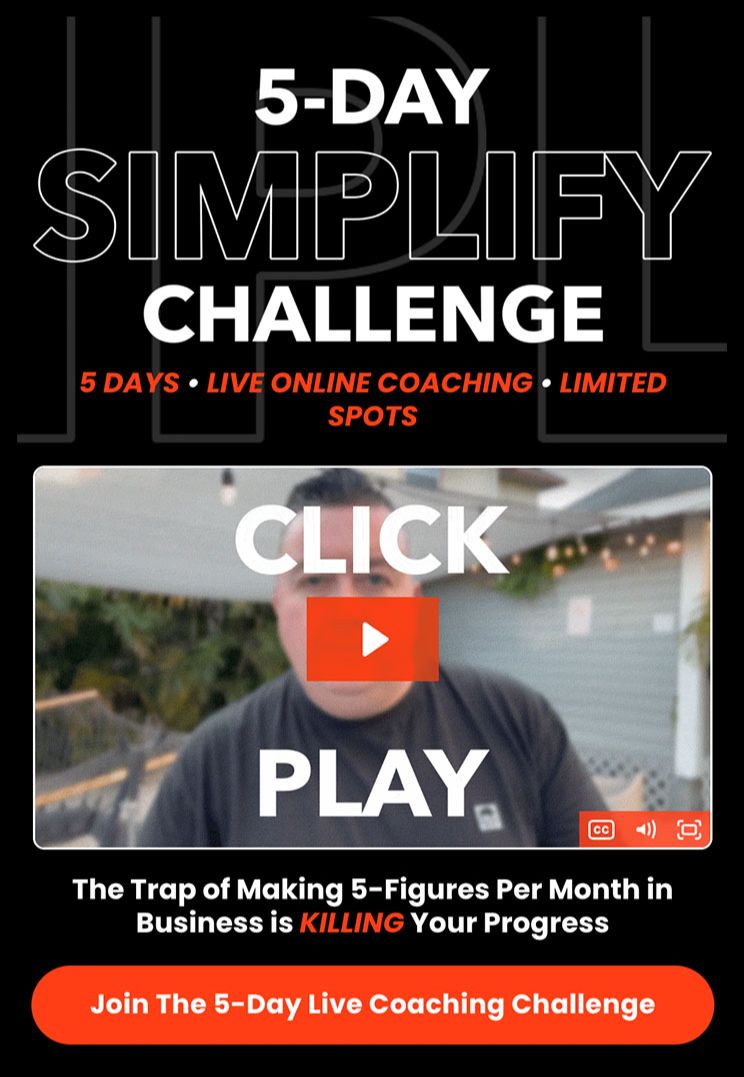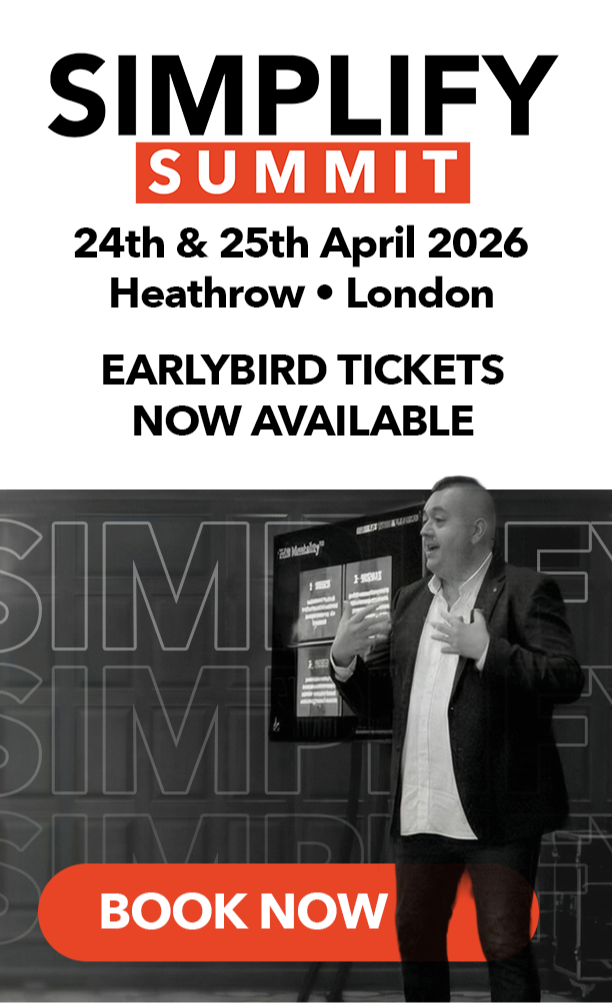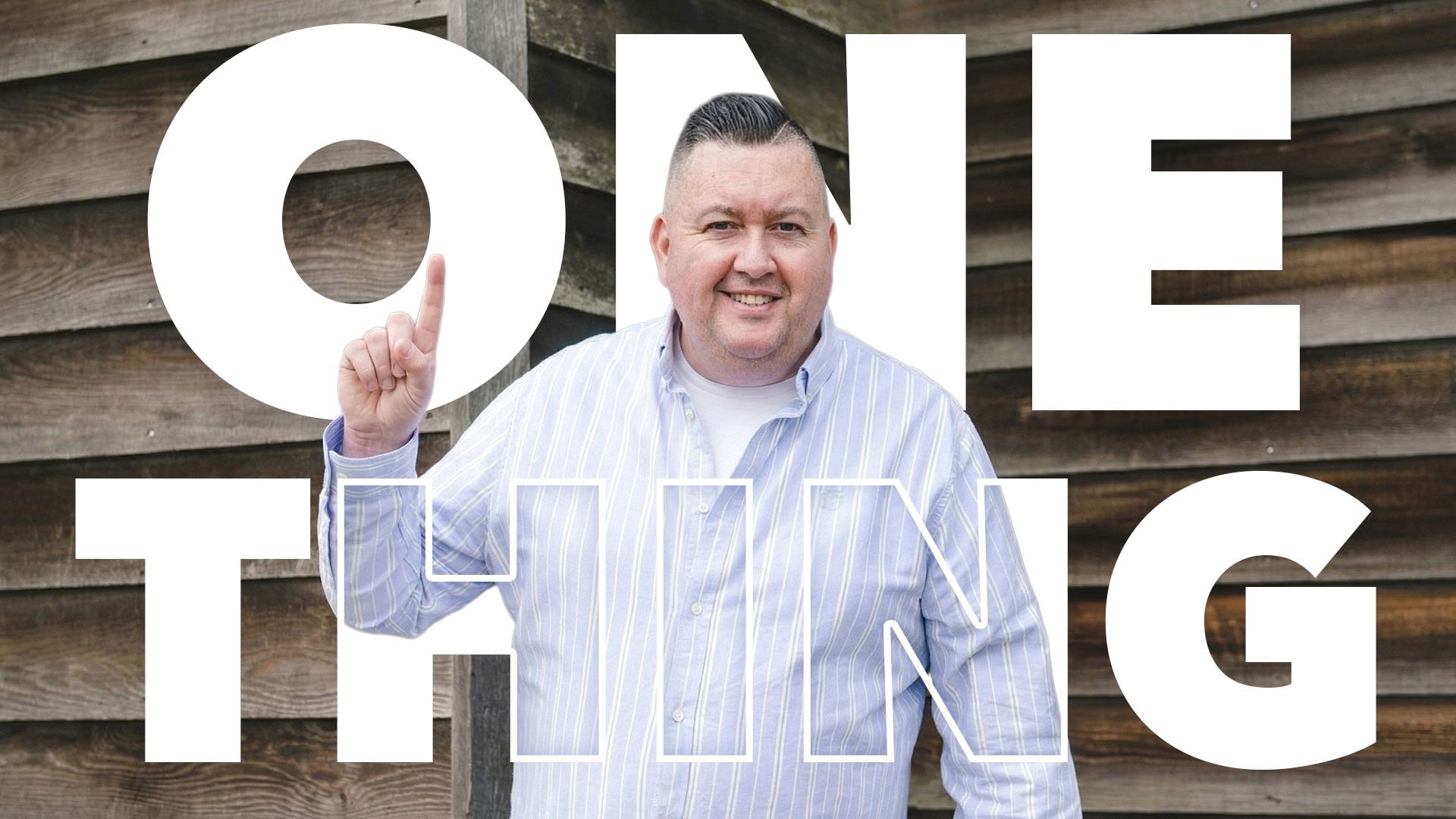[#011] The 5 Ways You’re Killing Your Business With Complexity
Oct 26, 2025
Last Tuesday afternoon, I deleted 23 tools from a client’s tech stack and switched their offer of their course to evergreen. With their permission of course.
We spent almost hours going through every piece of software they’d subscribed to over the past two years, seeing how they linked systems and processes together. Payment processors. Email platforms. Landing page builders. Webinar software. CRM systems. Analytics dashboards. Funnel tracking tools.There was a lot going on.
The total cost to all their tools? $1,847 per month.
And their usage? Maybe 30% at the most. We went though and found that almost half the tools they were paying for had not been touched in over three months. And the rest, sporadic, when they need to use them.
They were shocked. We looked at ways some of the systems overlapped, and looked at the reasons they were using one over another. With systems that had recently had updates and new features added, we could see how we could cancel a whole bunch, and simplify everything for them.
When we were done, after removing 23 different subscriptions and tools, we save $1,200 - per month! And streamlined some of the funnel activity at the same time.
I will say, this wasn’t a massive corporation with bloated budgets. This was a solo entrepreneur making decent money who’d been sold on the idea that more tools equals more growth.
They’d spent years building what the gurus told them was a “sophisticated marketing machine” by being part of a community they invested heavily into to join, but felt there was a disconnect between what was being taught and what was working in their business. This is why we started to chat.
They purchased my book, sent an enquiry to me and then paid for a 3-hour strategy session with me where we removed the complexity in their business.
What they’d actually built was a complexity trap that was strangling their business.
It wasn’t their fault though. It was two years ago that they purchased a premium version of a course and training from a very well known entrepreneur in the online business world. Their training featured dozens of strategies and templates, recommended they purchase lots of new software and tools, had custom Chat GPT’s for everything, and the overarching message of “When you have all this built you can scale your business” - in one session with me, we stripped things away and simplified.
Not only did we save them money from tools they didn’t need, when checking in on Friday, they told me the number of sales they generated in just 3 days since we spoke was 11. That was 11 x $2,500.
You see, we put their offer evergreen and she started to tell her email list about it.
Rather than follow the guru she had bought into who told her to do a maximum of two launches a year (she was 3 months after the last launch that bombed), we made the offer for her main core program available - and it was like the floodgates had opened.
No more scarcity of “the doors are closed” and certainly no message of “No more seats available” - her digital program starting seeking organically from her email list, making her $27,500 in sales in just a few days. 4 of her sales came from people responding to one story that she posted on Instagram, which she sent a link to an evergreen webinar to and they bought.
Launches Are NOT For everyone!
I believe that program launches have their place at times. But for a course that should be and could be completely evergreen, launching is like keeping the doors locked and sending people away from your business. If your doors are locked, and they have a challenge that you can solve, they will just go and find someone else that is selling something and they buy from them.
I am seeing the same story time and time again. The same patterns. The same mistakes. The same paralysis. All because some hot shot guru is saying “launch like me.” The reality is most of the big names in the online business space are finding things tough and they are looking at ways to simplify too. While they simplify, they are still trying to make their old funnels work. They are trapped in the complexity of who they have engineered their business and are looking for a way out.
With $50m and $100m businesses, it’s hard to make a pivot. But, if you’re nowhere near this level or scale of business right now, listen up - the pivot to simplify is easy. Let me unpack how you can get started and share exactly why complexity is something you want to avoid at all costs in your business today.
The 5 Ways Complex Marketing Kills Your Business
I wrote “Simplify the Funnel” because I was tired of watching entrepreneurs get trapped by complexity. After helping hundreds of clients through my agency, I saw the same five failure points over and over. Let me break them down for you before we get into some solutions so you can see if these are things holding you back from achieving your goals and growing your business.
1. Complex Funnels Are Impossible To Launch
You know what I saw more than anything else?
Analysis paralysis.
Clients would spend months planning their perfect funnel. Multiple upsell pages. Down-sell offers. Automated sequences. Retargeting campaigns. Webinar funnels feeding into application funnels feeding into sales calls.
They’d buy every course. Follow every guru. Map out every possible customer journey on whiteboards and walls covered in sticky notes.
And then… nothing.
They never launched.
The complexity became so overwhelming that they got stuck in endless planning, tweaking and micro-managing. They convinced themselves they needed just one more integration, one more automation, one more funnel step - and this all came from the advice they were getting from the people they had paid $1,000’s to.
A streamlined funnel can be launched in days. Show up, make and offer and convert onlookers to customers. Real customers. Real feedback. Real money.
Six months of planning and preparation with zero dollars in revenue, or a quick and easy funnel, out to the world fast and making money. Which would you prefer?
2. Complex Funnels Drain Your Bank Account
Here’s the numbers that nobody talks about.
Apparently, to run a “sophisticated” funnel, you need a CRM. An email platform. A landing page builder. Video hosting. A webinar service. Payment processors. Analytics tools. A few third-party integrations to make it all talk to each other.
Suddenly you’re spending anywhere between $500-$2,000 per month just to keep the lights on.
But it gets worse.
Every time something breaks - and things always break - you’re troubleshooting API failures, payment gateway glitches and integration issues. Each problem costs you hours and sometimes requires paying developers to fix.
I watched clients abandon entire funnels because the cost-to-reward ratio just wasn’t there. They’d invested thousands setting everything up but weren’t making enough to justify the ongoing expense.
What is my solution and recommendation almost every time? One complete business management, marketing, community and course delivery platform. Everything in one place. I use Kajabi and recommend it to everyone. You can check it out here.
3. Complex Funnels Confuse Your Customers
This one hurt to watch the face of clients as I told them they didn’t need everything they had built.
Clients would build funnels with multiple upsells, down-sells, and follow-up sequences. They thought more options meant more sales.
The opposite happened.
Their customers got confused. They didn’t know what the next step was. They didn’t understand why they were being offered another product when they hadn’t consumed the first one yet.
Decision density killed conversions.
I saw this pattern constantly. The more choices you give people, the slower the timeframe from first contact to sale, and the fewer decisions made along the way. It’s called decision fatigue and it’s real.
When you strip away the complexity and give people one clear path, they take it. When you give them seventeen possible paths, they freeze.
4. Complex Funnels Create Friction Everywhere
Every step you add to your funnel is a place where people can drop off.
Think about it. You’ve got them to click your ad. Great. Now they need to watch your video. Then opt in for your lead magnet. Then confirm their email. Then attend your webinar. Then book a call. Then show up for the call. Then buy… maybe!
That’s seven decision points where you can lose them in just that one example.
What if you just… didn’t do most of that?
What if you had a simple offer that solved a specific problem for a specific audience and you just let them buy it?
The idea of my Minimum Viable Funnel (MVF) strips away these complications. It focuses on a clear, direct path that resonates with people who are ready to buy.
By building an MVF, you’re not building barriers, you’re removing them.
5. Complex Funnels Waste Your Time
If you really look at things, you will find that you’re spending more time managing your funnel than you are creating content, serving clients or actually selling.
You’re tweaking automation sequences. Checking analytics dashboards. Testing split tests. Monitoring conversion rates across seventeen different touchpoints. Troubleshooting broken integrations.
This is time you could spend talking to actual customers, creating content that positions you as an expert, building real relationships, making real sales.
I call this the opportunity cost of complexity. Every hour you spend managing complex systems is an hour you’re not spending growing your business.
The Simple Alternative That Actually Works
After 20 years of running an agency and seeing what works and what doesn’t, here’s what I know for certain…
Simple scales. Complex fails.
The businesses that win aren’t the ones with the most sophisticated funnels. They’re the ones with the clearest message, the most direct path to purchase and the strongest relationships with their customers.
That’s why I developed the Minimum Viable Funnel framework. It’s built on three core principles…
ONE | Focus on Buyers, Not Browsers
Stop trying to attract everyone. Create content and offers for people who are ready to buy. Forget the freebie hunters. Build your list with customers, not subscribers.
TWO | Create One Clear Path
Pick your best product. Build one simple way for people to discover it, understand it and buy it. That’s it. No tripwires. No down-sells. No seventeen-step sequences.
THREE | Remove Every Unnecessary Step
Look at your current funnel. Now ask yourself: “What happens if I remove this step?” If the answer is “nothing bad” or “people might actually convert better,” delete it.
Your Simplification Challenge This Week
Here’s what I want you to do.
Grab a piece of paper. Make two columns.
In the left column, list every tool, system, funnel and process you’re currently using in your marketing. Everything. Don’t leave anything out.
In the right column, write what result each thing is supposed to give you.
Now look at that list and ask yourself three questions…
- Which of these are actually delivering results?
- Which of these are you keeping “just in case”?
- Which of these could you delete today without anyone noticing?
Pick one thing - just one - and simplify it this week.
Maybe that’s cancelling a tool you’re not using. Maybe it’s deleting three steps from your funnel. Maybe it’s stopping an automation that’s causing more problems than it solves.
Just pick one thing and make it simpler.
Your breakthrough doesn’t come from adding more complexity. It comes from removing it.
I need to say this again…
The businesses that win aren’t the ones with the most sophisticated systems. They’re the ones brave enough to keep things simple.
While everyone else is building complicated funnels, you can be banking cash from simple ones.
Let me know what you decide to simplify this week.
Keep it simple,
Ant
P.S. If you’re drowning in complexity and want help cutting through it, grab a copy of “Simplify the Funnel” at www.simplifythefunnel.com. It’s the complete framework for building marketing that actually works without the overwhelm. Everything I wish I’d known 20 years ago.











